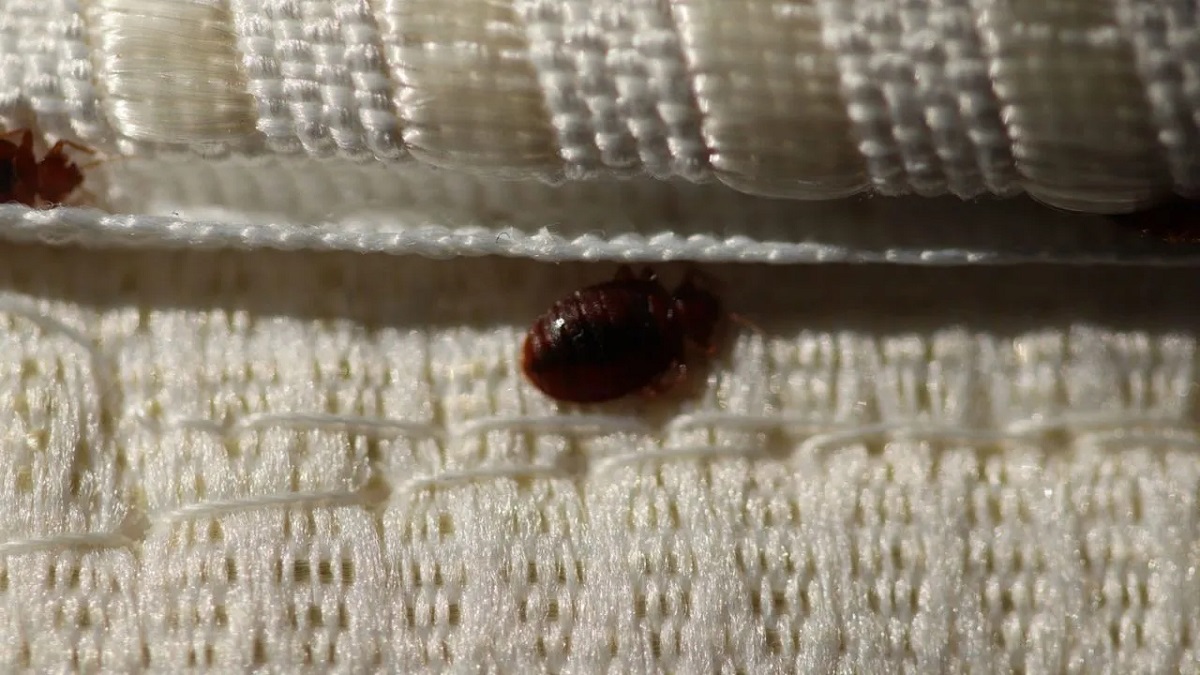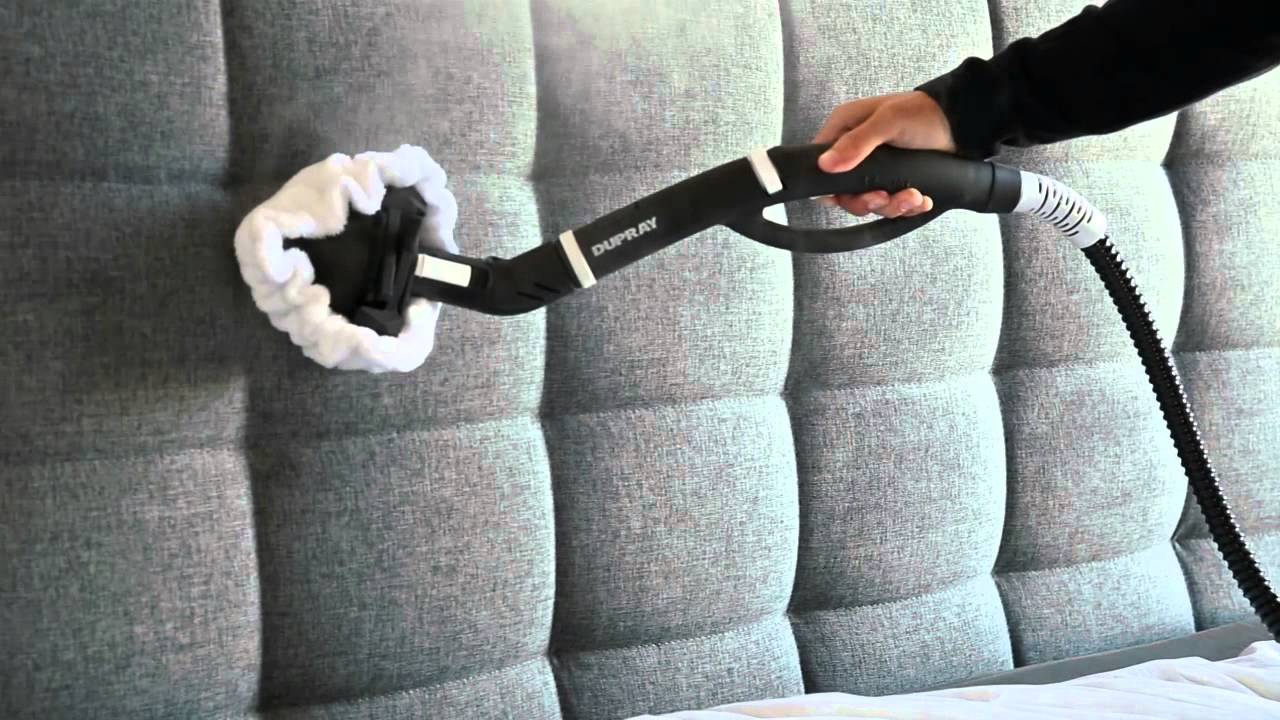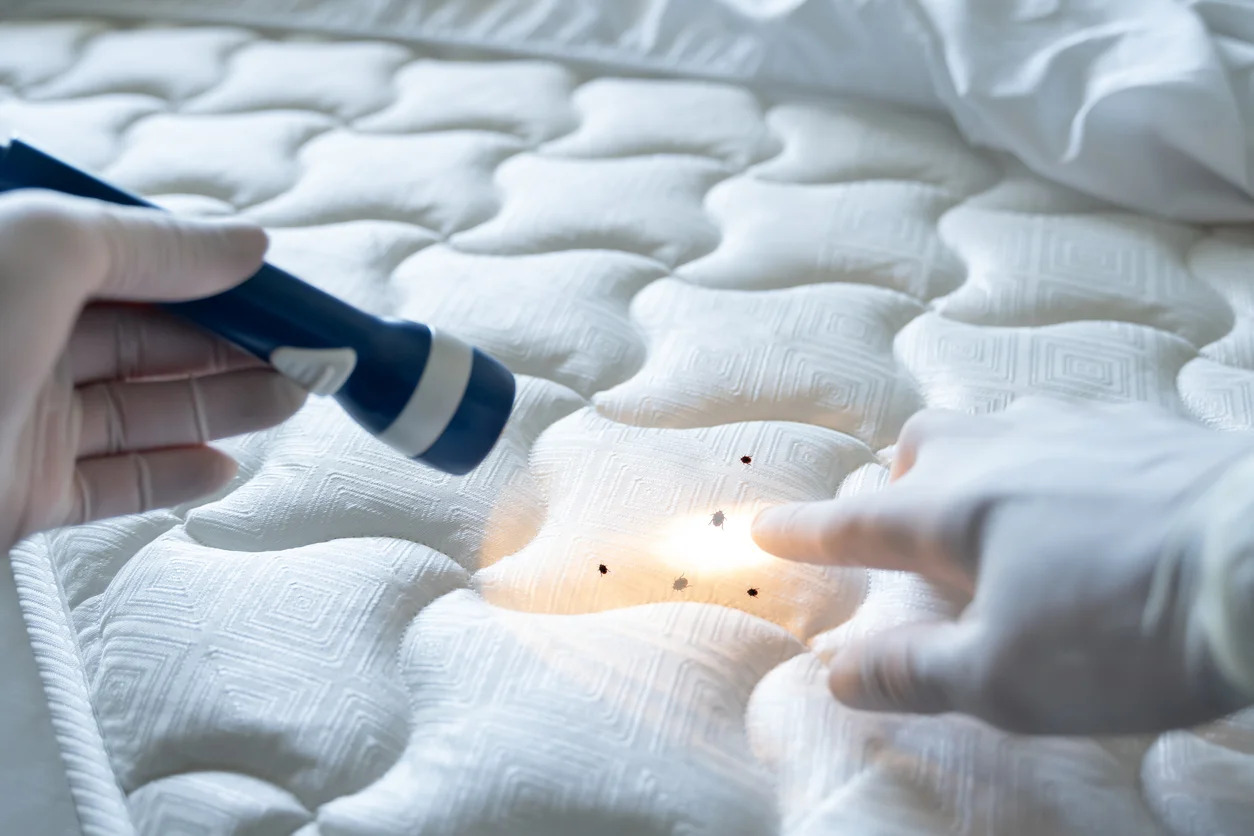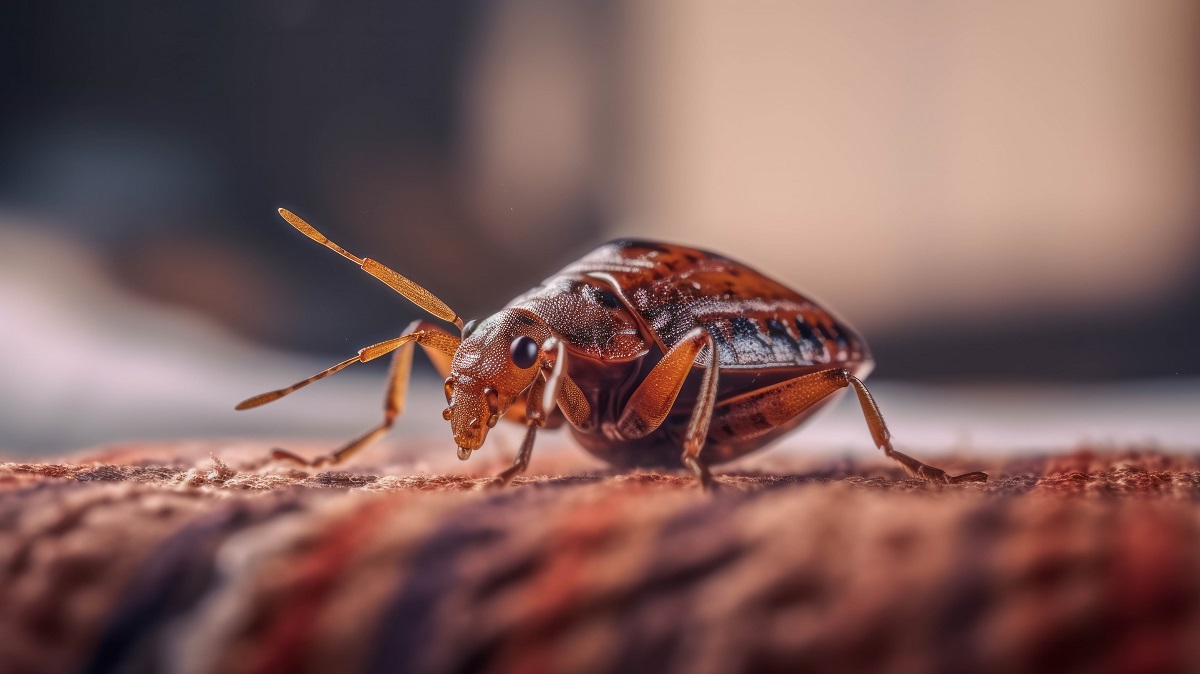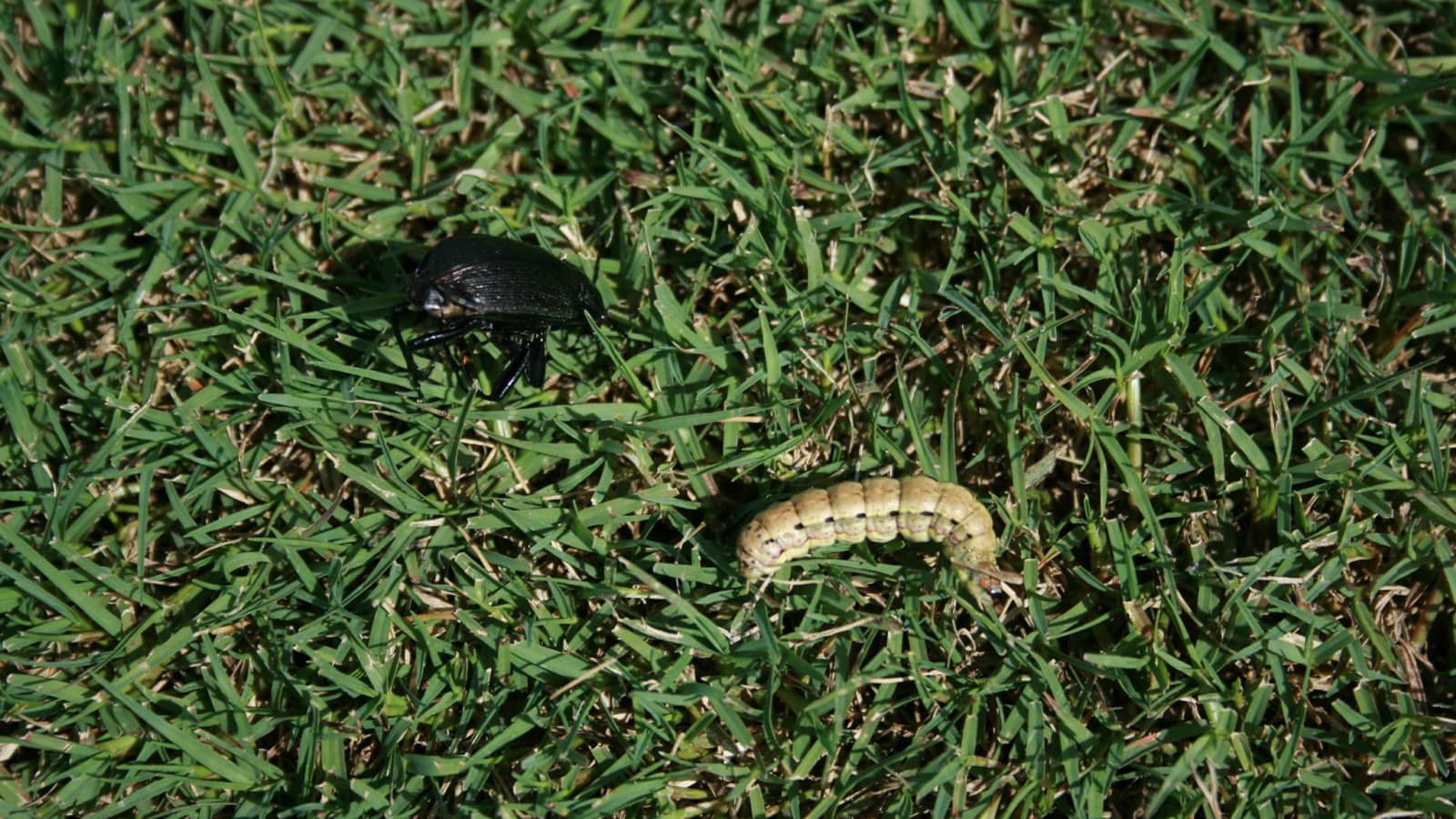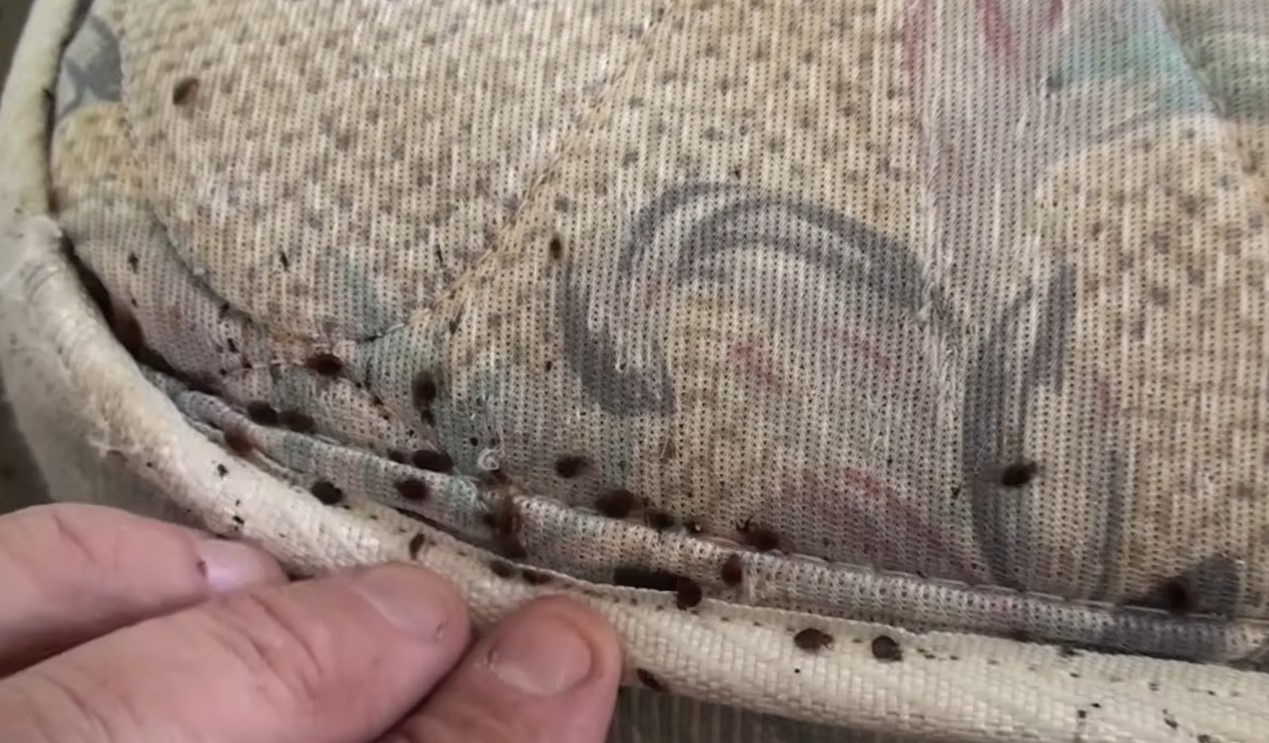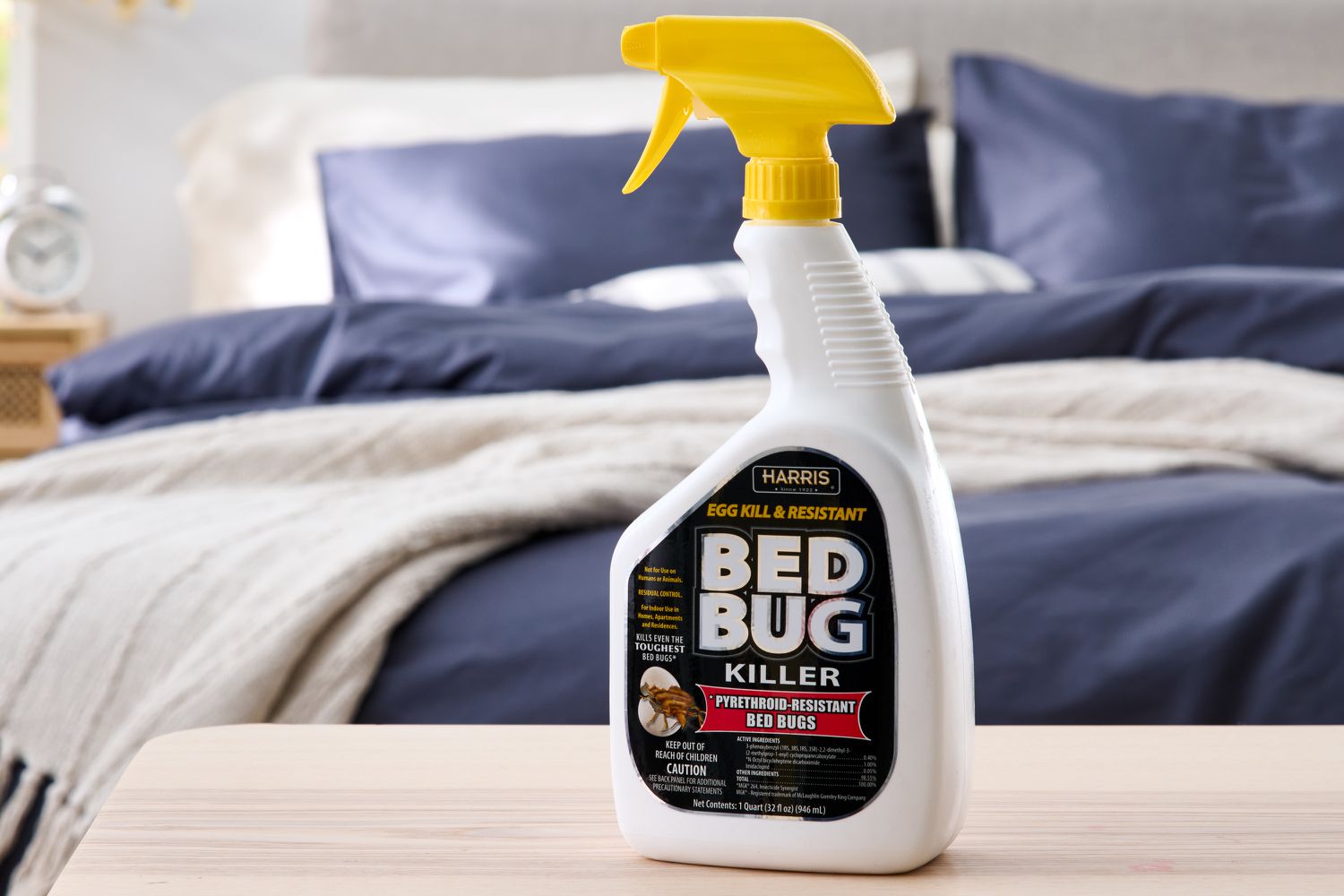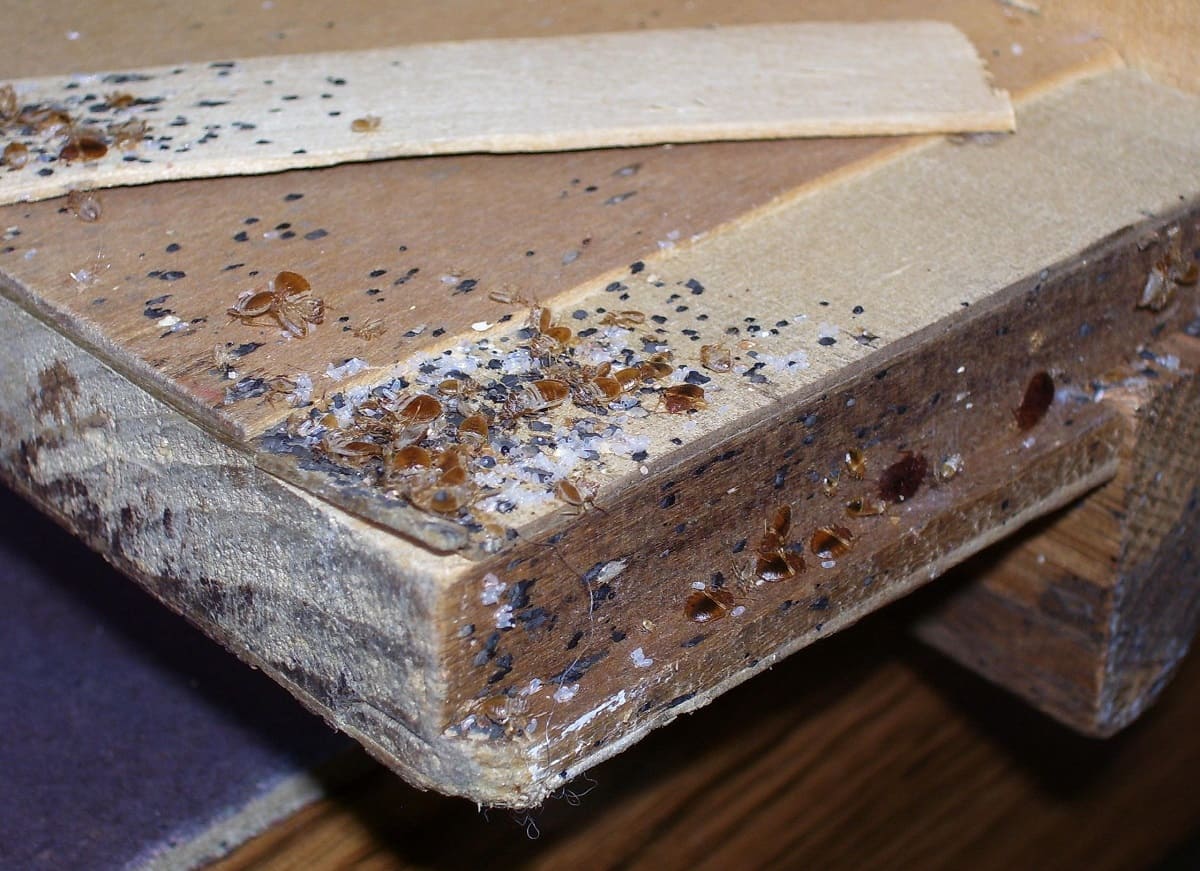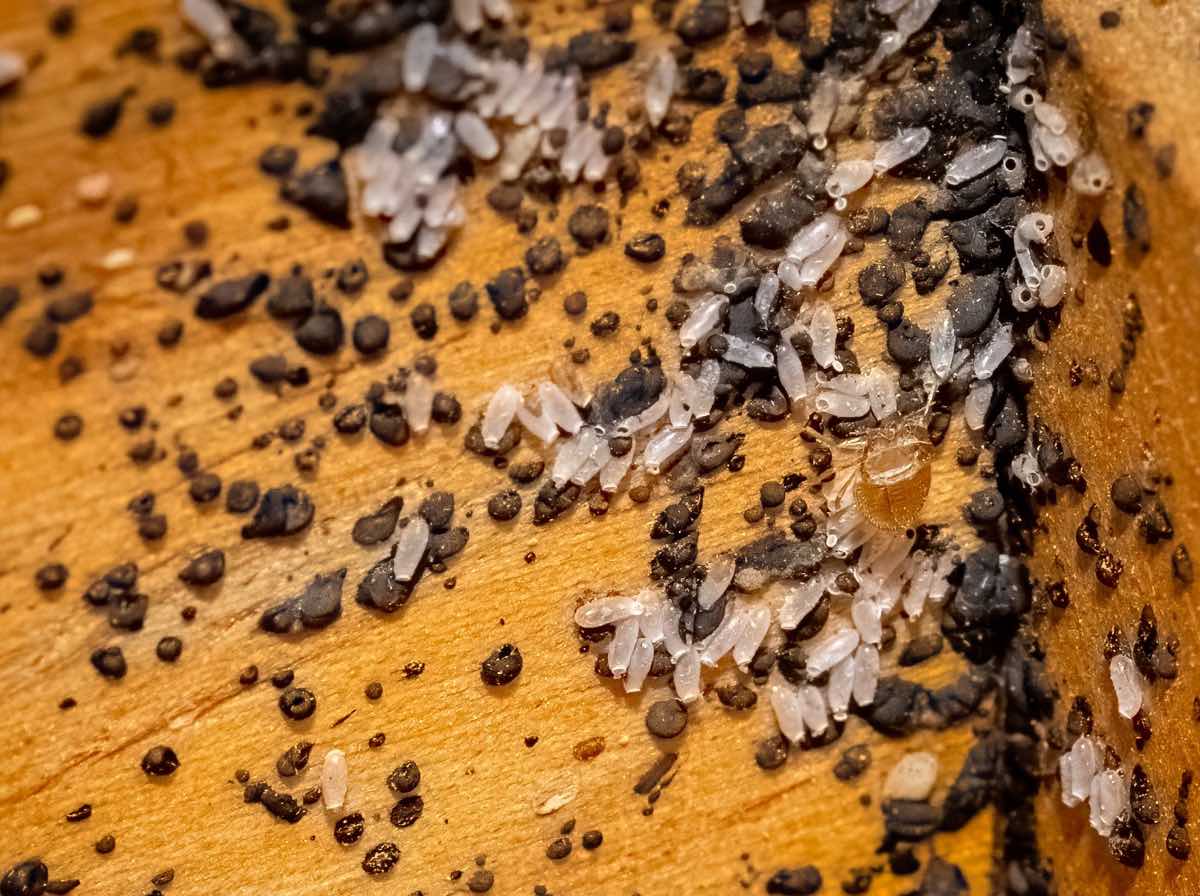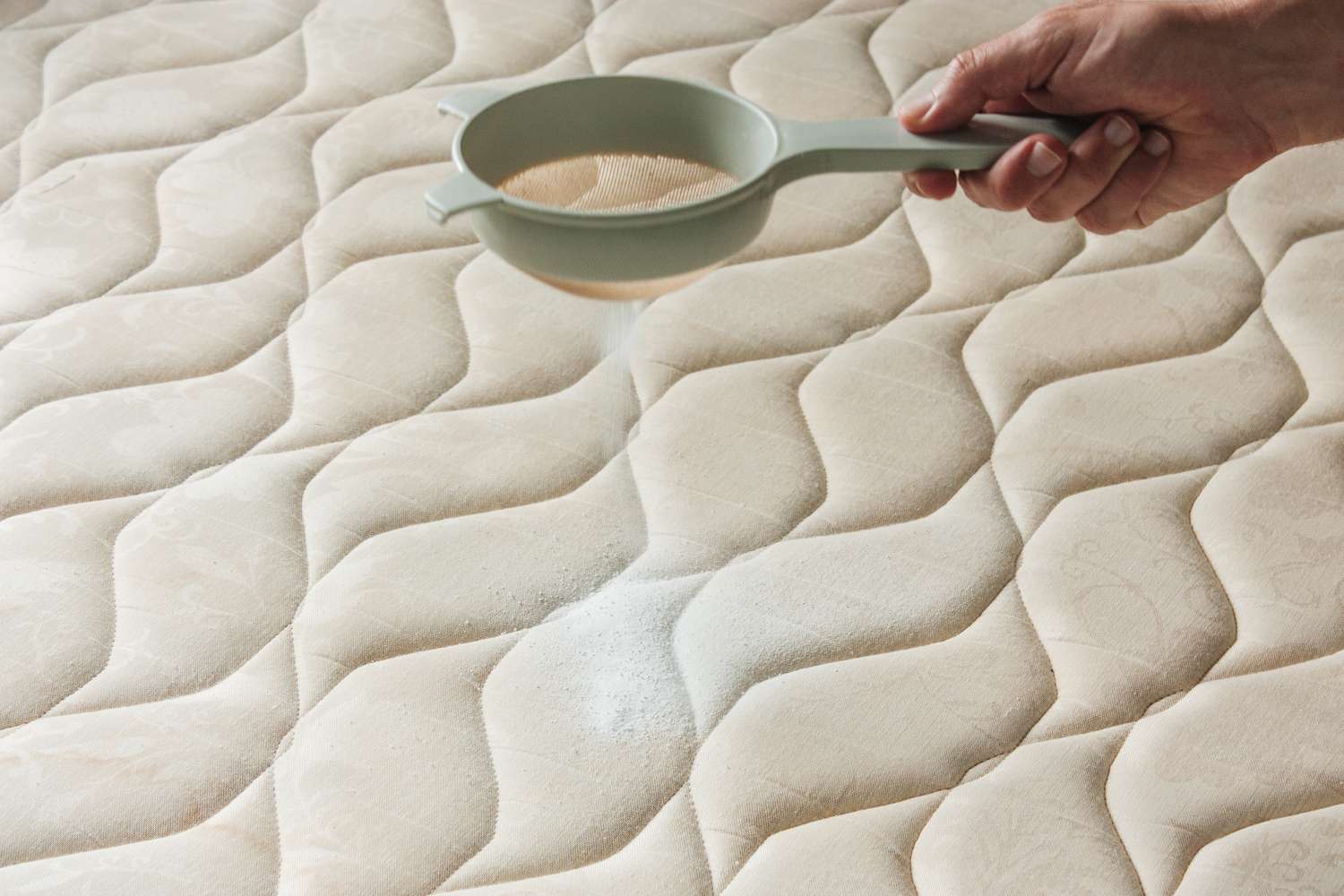Home>Furniture>Bedroom Furniture>What Kills Bed Bugs And Their Eggs
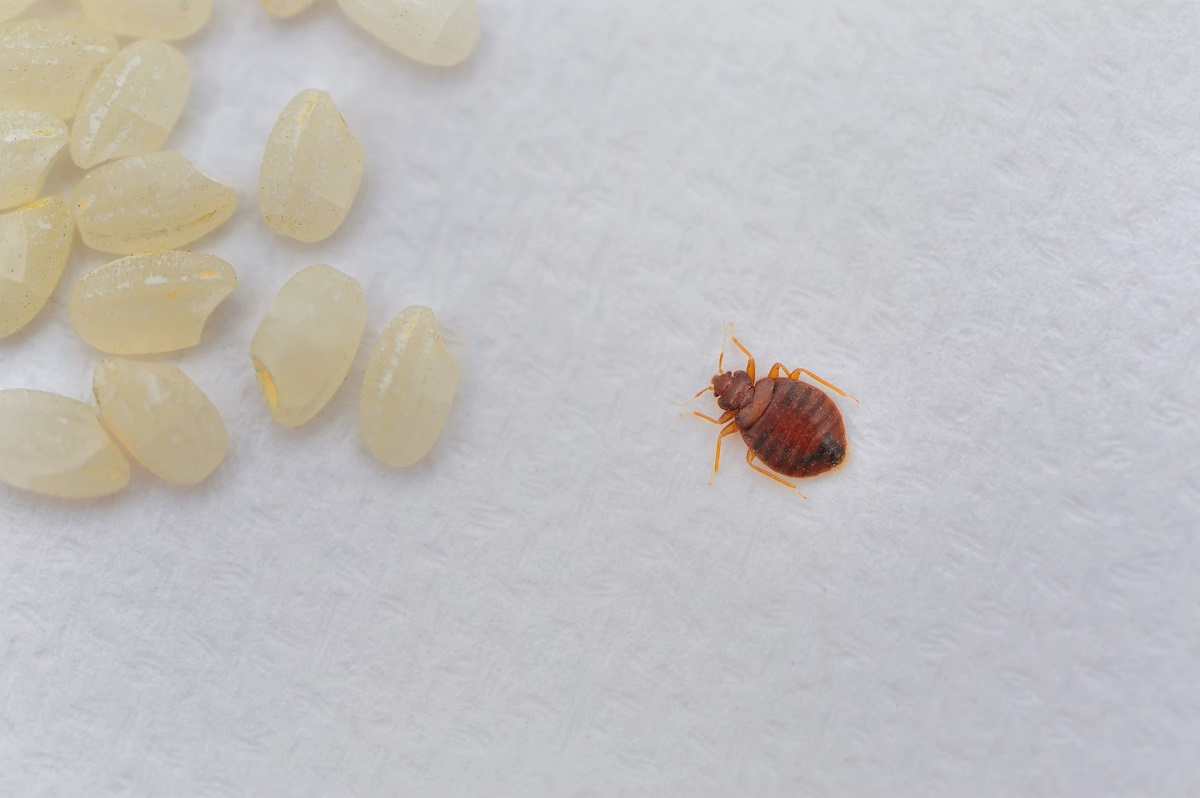

Bedroom Furniture
What Kills Bed Bugs And Their Eggs
Modified: October 22, 2024
Looking for effective ways to eliminate bed bugs and their eggs? Discover the best solutions and products suitable for your bedroom furniture.
(Many of the links in this article redirect to a specific reviewed product. Your purchase of these products through affiliate links helps to generate commission for Storables.com, at no extra cost. Learn more)
Introduction
Welcome to our comprehensive guide on how to deal with bed bugs and their eggs. Bed bugs are small, blood-sucking insects that infest homes and can cause significant discomfort. Dealing with a bed bug infestation can be frustrating, but with the right knowledge and strategies, you can successfully eliminate these pests from your bedroom.
Before we dive into the various methods of eliminating bed bugs, it’s important to understand a few key factors about these tiny insects. Bed bugs are nocturnal creatures that feed on the blood of humans and animals, typically during the night when their hosts are asleep. They are reddish-brown in color, have a flat oval-shaped body, and are about the size of an apple seed.
Bed bugs have a unique life cycle that consists of several stages: egg, nymph, and adult. The eggs are tiny, about the size of a pinhead, and are often found in clusters in hidden areas such as mattress seams, bed frames, and cracks in furniture. These eggs hatch into nymphs, which are smaller versions of the adults. Nymphs undergo several molts before becoming fully grown adults.
Identifying a bed bug infestation can be challenging, as they are masters of hiding in small cracks and crevices. However, some common signs include small reddish-brown stains on bedding, molting shells, and a distinctive sweet musty odor. If you suspect a bed bug infestation, it’s crucial to act quickly to prevent the problem from worsening.
In this guide, we will explore various methods to eliminate bed bugs and their eggs, ranging from natural remedies to professional treatments. It’s worth noting that a combination of approaches may be necessary to successfully eradicate a bed bug infestation.
So, if you’re ready to take the necessary steps to reclaim your bedroom from these pesky creatures, let’s delve into the different strategies you can employ to get rid of bed bugs and their eggs.
Key Takeaways:
- Understanding the lifecycle and habits of bed bugs is crucial for effective pest control. Identifying signs of infestation and employing a combination of methods can help eliminate these pests from your home.
- Prevention is key to avoiding bed bug infestations. Regular cleaning, decluttering, and sealing cracks and crevices, along with cautious travel and secondhand item inspection, can significantly reduce the risk of encountering bed bugs.
Read more: What Temperature Kills Bed Bugs
Understanding bed bugs and their lifecycle
Before we discuss the methods of eliminating bed bugs and their eggs, it’s important to have a basic understanding of their lifecycle. This knowledge will help you effectively target and eradicate these pests from your bedroom.
Bed bugs go through a series of stages in their lifecycle, starting from eggs and progressing to nymphs before reaching adulthood. Understanding each stage of their development is crucial for effective pest control.
- Eggs: A female bed bug can lay hundreds of eggs in her lifetime. These eggs are tiny, about the size of a pinhead, and are usually laid in secluded areas such as mattress seams, bed frames, and cracks in furniture. The eggs are often cemented to the surface, making them difficult to dislodge.
- Nymphs: Once the eggs hatch, they release nymphs, which are miniature versions of the adult bed bugs. Nymphs require a blood meal to molt and grow to the next stage. They shed their exoskeleton as they grow, leaving behind molted shells that resemble translucent, paper-like materials.
- Adults: After several molts, the nymphs develop into adult bed bugs. Adult bed bugs are approximately the size of an apple seed and have a reddish-brown color. They feed on blood, typically during the night, and can survive for months without feeding.
Bed bugs are elusive creatures that hide in cracks, crevices, and other hidden areas during the day and emerge at night to feed. They are attracted to the carbon dioxide produced by humans and the warmth of their bodies, which is why they are commonly found in bedrooms.
It’s important to note that bed bugs are not associated with unsanitary conditions. They can be found in both clean and dirty environments. They are excellent hitchhikers and can be brought into your home through luggage, furniture, clothing, or other infested items.
Bed bugs are known to be resilient and can survive for months without feeding. They can also withstand a wide range of temperatures, making them difficult to eradicate. However, with the right techniques and persistence, it is possible to eliminate them and prevent a re-infestation.
Now that you have a better understanding of the lifecycle and habits of bed bugs, you can proceed to identify and address the infestation effectively. In the next section, we will discuss the signs of a bed bug infestation and how to spot them in your bedroom.
Identifying a bed bug infestation
Identifying a bed bug infestation in your bedroom is crucial for prompt and effective treatment. The earlier you detect the presence of bed bugs, the easier it will be to eliminate them and prevent further spread. Here are some signs to look out for:
- Bites and Skin Reactions: Bed bug bites are often the first indication of an infestation. These bites appear as small, red, itchy welts on the skin. They are usually clustered together in a line or a small area. However, it’s important to note that not everyone reacts to bed bug bites, so the absence of bites does not necessarily mean the absence of bed bugs.
- Blood Stains: As bed bugs feed on their hosts, they often leave behind small blood stains on bedding or pajamas. Look for reddish-brown smears or spots on sheets, pillowcases, mattress covers, and other fabric surfaces.
- Dark Spots: Bed bugs leave behind dark, rust-colored excrement as they digest blood. These droppings may appear as small dots or smears on bedding, mattresses, and other infested areas.
- Molted Shells: Bed bugs go through multiple molts during their development. As they shed their exoskeletons, they leave behind translucent, paper-like shells. These discarded shells can often be found in the corners of mattresses, along baseboards, or in between furniture joints.
- Musty Odor: Bed bugs release a distinctive, musty odor from their scent glands. If you notice an unusual sweet, musty smell in your bedroom, it could be an indication of a bed bug infestation.
- Visible Bed Bugs: In severe infestations, you may be able to spot live bed bugs crawling on your mattress, bed frame, or nearby furniture. Adult bed bugs are about the size of an apple seed and have a reddish-brown color. Nymphs are smaller but still visible to the naked eye.
It’s important to keep in mind that bed bugs are skilled at hiding, and in many cases, you may not see them directly. Therefore, it’s also essential to inspect your bedroom thoroughly.
To inspect your bedroom for bed bugs, follow these steps:
- Start with the bed: Remove the bedding and inspect the mattress, paying close attention to the seams, tufts, and folds. Use a flashlight to help you spot any signs of bed bugs, including dark spots, molted shells, or live bugs.
- Check the headboard and bed frame: Carefully examine these areas and look for any signs of infestation, such as dark spots, blood stains, or live bugs.
- Inspect other furniture: Bed bugs can also hide in nearby furniture, such as nightstands, dressers, and chairs. Check the seams, joints, and cracks for any signs of infestation.
- Examine electrical outlets and baseboards: Bed bugs are adept at hiding in tiny cracks and crevices. Inspect the area around electrical outlets, baseboards, and any other small gaps where bed bugs could potentially hide.
- Don’t forget the closet: Bed bugs can infest clothing and other fabrics. Check your closet for any signs of infestation, including dark spots or live bugs on clothing or in the corners of the closet.
If you suspect a bed bug infestation based on the signs mentioned above or your visual inspection, it’s important to take immediate action. In the next section, we will explore natural remedies and effective methods for killing bed bugs and their eggs.
Natural remedies to kill bed bugs and their eggs
If you prefer to tackle a bed bug infestation using natural methods, there are several remedies you can try. While these remedies may not be as potent as professional treatments, they can still be effective in killing bed bugs and their eggs, especially when used in conjunction with other control strategies. Here are some natural remedies to consider:
- Heat treatment: Bed bugs are sensitive to high temperatures, so exposing infested items to heat can be an effective way to kill them. Wash infested bedding, clothing, and fabrics in hot water and dry them on the highest heat setting. You can also use a steam cleaner to treat mattresses, furniture, and other infested areas. Ensure that the heat penetrates deep into the items to eliminate both bugs and eggs.
- Diatomaceous earth (DE): DE is a natural powder made from the fossilized remains of tiny aquatic organisms called diatoms. It works by dehydrating and cutting through the exoskeleton of bed bugs, eventually causing their demise. Sprinkle a thin layer of DE in areas where bed bugs are present, such as along baseboards, in cracks and crevices, and around the bed frame. Leave it for a few days and vacuum it up along with the dead bugs.
- Essential oils: Some essential oils have insecticidal properties that can repel and kill bed bugs. Popular choices include tea tree oil, lavender oil, peppermint oil, and eucalyptus oil. Mix a few drops of your chosen oil with water and spray it in infested areas. Repeat the process regularly to maximize the effectiveness.
- Neem oil: Neem oil is a natural insecticide derived from the neem tree. It disrupts the growth and reproduction of bed bugs, eventually leading to their demise. Apply neem oil to infested areas or mix it with water and spray it around the bedroom. Repeat the treatment every few days to ensure the infestation is eliminated.
- Baking soda: Baking soda has drying properties that can dehydrate bed bugs and their eggs. Sprinkle a generous amount of baking soda on infested areas and leave it overnight. Vacuum the area thoroughly the next day, disposing of the vacuum bag or emptying the canister in a sealed plastic bag.
- Lavender sachets: Bed bugs are known to dislike the scent of lavender. Place dried lavender flowers or sachets in your bedroom to deter them from settling in. While this may not eliminate an existing infestation, it can help prevent further spread.
Note that while natural remedies can be effective against bed bugs, they may not have the same potency as professional insecticides or heat treatments. It’s important to be persistent and thorough when using natural methods, especially in severe infestation cases. Additionally, it’s crucial to combine these remedies with other control strategies, such as regular cleaning, decluttering, and sealing cracks and crevices in your bedroom.
In the next section, we will explore the option of heat treatment as a more potent method for eradicating bed bugs and their eggs.
Heat treatment for eradicating bed bugs
Heat treatment is a highly effective method for eradicating bed bugs and their eggs. It involves exposing infested items or areas to high temperatures that are lethal to the pests. Heat treatment can be done using various methods, including steamers, hot dryers, or professional-grade heat chambers. Here’s how heat treatment works and why it is a reliable option:
How does heat treatment work?
Bed bugs are sensitive to heat, and they cannot survive at temperatures above 120°F (49°C). Heat treatment involves exposing infested items or areas to temperatures that exceed this threshold, effectively killing the bugs and their eggs.
Benefits of heat treatment:
- Effectiveness: Heat treatment has a high success rate in eradicating bed bugs due to its ability to penetrate deep into furniture, mattresses, and other hiding spots. The heat can reach areas that are difficult to access with insecticides.
- Comprehensive treatment: Unlike traditional methods that only target visible bugs, heat treatment can eliminate both adult bed bugs and their eggs. This ensures that you are tackling the full infestation and minimizing the risk of a resurgence.
- Chemical-free: Heat treatment is a non-chemical approach, making it an ideal option for those who prefer natural or eco-friendly methods. It eliminates the need for potentially harmful pesticides.
- No residue: Since heat treatment does not involve the use of chemicals, there is no residue left behind. You can return to your treated area immediately without the worry of lingering chemicals.
- Rapid results: Heat treatment can provide quick results, often eradicating an infestation in a single treatment session. This is especially advantageous for those who want to resolve the problem promptly.
Heat treatment process:
Professional heat treatments involve specialized equipment that raises the temperature of the infested area to lethal levels. Steamers can also be used to target specific items or smaller areas. Here are the key steps in the heat treatment process:
- Preparation: Before the heat treatment, you’ll need to remove any items that may be damaged by high temperatures, such as candles, electronics, and certain plastics. It’s crucial to follow the instructions provided by the heat treatment professional to ensure a successful treatment.
- Heat application: The heat treatment professional will use the appropriate equipment to raise the temperature in the infested area to the required level. This may involve heating the room or using steam to target specific items.
- Monitoring: Throughout the treatment process, the professional will monitor the temperature to ensure that it stays within the lethal range for bed bugs. They will also focus on potential hot spots to ensure thorough elimination.
- Follow-up treatment: In some cases, a follow-up treatment may be recommended to ensure that any remaining bed bugs or newly hatched eggs are also eliminated. This helps to prevent re-infestation.
Heat treatment can be an effective solution for eliminating bed bugs, but it’s important to consult with a professional to ensure safe and effective application. They will have the knowledge and expertise to determine the appropriate duration and temperature required for your specific situation.
In the next section, we will explore the option of using insecticides to eliminate bed bugs.
Read more: What Chemicals Kill Bed Bugs
Using insecticides to eliminate bed bugs
Insecticides are commonly used to eradicate bed bugs and are an effective option when applied correctly. They utilize chemical compounds that target the nervous system of bed bugs, leading to their elimination. Here’s what you need to know about using insecticides to eliminate bed bugs:
Choosing the right insecticide:
There are different types of insecticides available for bed bug control, including sprays, dusts, and aerosols. When selecting an insecticide, look for products that are specifically labeled for bed bugs. These products contain ingredients such as pyrethroids or neonicotinoids, which are effective against bed bugs.
Preparation:
Prior to using insecticides, thorough preparation is crucial to maximize their effectiveness:
- Clear the area: Remove clutter, such as clothing, bedding, and personal items, to provide easy access for treatment.
- Vacuum: Vacuum the infested area, paying close attention to cracks, crevices, and mattress seams. Dispose of the vacuum bag or empty the canister in a sealed plastic bag to prevent any surviving bugs from escaping.
- Seal cracks and crevices: Use caulk or sealant to seal any cracks, crevices, or gaps in walls, baseboards, and furniture. This prevents bed bugs from hiding in these areas during treatment.
- Protect yourself: Wear protective gloves and a mask when applying insecticides to avoid contact with the chemicals.
Application:
Follow the instructions provided on the insecticide product label carefully. Some general guidelines for using insecticides against bed bugs include:
- Target areas: Focus on areas where bed bugs hide, such as cracks, crevices, seams, and tufts of mattresses, bed frames, and furniture.
- Apply directly: Directly apply the insecticide to the infested areas, ensuring thorough coverage. Pay attention to the instructions regarding the amount and frequency of application.
- Use caution: Avoid applying insecticides to areas that come into direct contact with your skin or areas where you sleep or come into prolonged contact, such as pillows or blankets.
- Avoid over-application: Using too much insecticide may not improve its effectiveness and can pose health risks. Follow the recommended dosage and application instructions.
- Monitor and retreat if necessary: Keep an eye on the treated areas and monitor for any signs of re-infestation. If bed bugs persist, a follow-up treatment with insecticide may be necessary.
Professional assistance:
If you’re dealing with a severe or persistent bed bug infestation, it may be wise to seek professional help. Pest control professionals have access to stronger insecticides and equipment, and they have the expertise and experience to effectively eliminate the infestation. They can assess the situation, determine the most suitable insecticide, and ensure proper application for optimal results.
It’s important to note that while insecticides can be effective against bed bugs, they should be used with caution. Always follow the instructions and safety precautions outlined by the manufacturer to protect yourself and others from potential harm.
In the next section, we will explore the effectiveness of steam treatment as a method to eliminate bed bugs.
Vacuuming can help to remove bed bugs and their eggs from surfaces. Be sure to use a vacuum with a HEPA filter and dispose of the vacuum bag in a sealed plastic bag.
The effectiveness of steam treatment against bed bugs
Steam treatment is a highly effective method for eliminating bed bugs and their eggs. The heat generated by steam can penetrate deep into cracks, crevices, and fabrics, effectively killing bed bugs at all stages of their lifecycle. Here’s why steam treatment is an excellent option for combating bed bug infestations:
How does steam treatment work?
The high temperature of steam is lethal to bed bugs. When exposed to steam, the heat rapidly raises the temperature of the infested items or areas to a level that is lethal to bed bugs and their eggs. The heat penetrates deep into mattresses, furniture, and other hiding spots, ensuring thorough extermination.
Advantages of steam treatment:
- Chemical-free: Steam treatment is a non-chemical method for controlling bed bugs. It relies solely on the power of heat, making it an ideal option for those who prefer natural or eco-friendly solutions.
- Effectiveness: Steam treatment is highly effective in killing bed bugs at all stages of their lifecycle, including eggs, nymphs, and adults. The heat can reach places that may be difficult to access with other methods, ensuring comprehensive extermination.
- Thorough eradication: Steam can penetrate deep into fabrics, mattresses, and furniture, ensuring that even hidden bed bugs and eggs are eliminated. This helps minimize the risk of a re-infestation.
- Safe for most surfaces: Steam treatment is generally safe to use on a variety of surfaces, including mattresses, carpets, clothing, and upholstery. However, it’s important to follow the manufacturer’s instructions and test on a small, inconspicuous area beforehand to avoid any potential damage.
- Immediate results: Steam treatment provides quick results, as bed bugs are killed on contact with the hot steam. This can bring peace of mind and immediate relief from the infestation.
Guidelines for steam treatment:
When using steam treatment to eliminate bed bugs, it’s important to follow these guidelines:
- Use an appropriate steam cleaner: Use a steam cleaner specifically designed for pest control. These cleaners generate enough heat to effectively kill bed bugs. Make sure the cleaner produces steam at a minimum temperature of 150°F (65°C).
- Direct the steam: Direct the steam nozzle at the infested areas, ensuring that the steam reaches all cracks, crevices, seams, and tufts of mattresses, furniture, and other hiding spots. Move the steam cleaner slowly to allow sufficient exposure time.
- Apply steam evenly: Ensure thorough coverage by applying steam evenly to the entire area. Pay particular attention to areas where bed bugs are likely to hide, such as mattress seams, bed frames, and headboards.
- Be cautious with delicate items: Exercise caution when using steam on delicate items. Test a small area first and avoid excessive exposure to prevent damage. Some items, such as electronics, may not be steam-safe and require alternative treatment.
- Monitor and retreat if necessary: Monitor the treated areas for any signs of re-infestation. If bed bugs persist, repeat the steam treatment or consider combining it with other control methods for a more comprehensive approach.
Professional steam treatment:
If you are dealing with a severe infestation or have concerns about using steam treatment on your own, consider hiring a professional pest control service. They have the experience and specialized equipment to perform steam treatment effectively, ensuring maximum results in eradicating bed bugs.
Overall, steam treatment is a highly effective and eco-friendly method for eliminating bed bugs. Its ability to reach hidden areas and its non-chemical approach make it a popular choice among homeowners and pest control professionals. However, it’s important to use steam treatment in conjunction with other control strategies and maintain good sanitation practices to prevent future infestations.
In the next section, we will explore the option of vacuuming as a method of controlling bed bugs.
Vacuuming as a method of controlling bed bugs
Vacuuming is an effective and practical method for controlling bed bugs and reducing their population. While vacuuming alone may not completely eliminate a bed bug infestation, it can significantly help in reducing their numbers, especially when combined with other control strategies. Here’s why vacuuming is a valuable tool in the battle against bed bugs:
How does vacuuming help?
When done correctly, vacuuming can physically remove adult bed bugs, nymphs, and their eggs from infested areas. It helps in several ways:
- Immediate reduction: Vacuuming quickly reduces the number of live bed bugs present, providing immediate relief from the infestation.
- Egg removal: Vacuuming can effectively remove bed bug eggs, which are extremely tiny and often hidden in cracks and crevices. By removing the eggs, vacuuming helps prevent future generations of bed bugs from hatching and perpetuating the infestation.
- Disrupting their hiding spots: Bed bugs are excellent at hiding in various cracks and crevices. Regular vacuuming helps disturb their hiding places, making it harder for them to find secure locations and increasing their exposure to other control methods.
- Reducing allergens: Vacuuming not only removes bed bugs but also eliminates shed exoskeletons, feces, and other debris that can trigger allergies or breathing problems in sensitive individuals.
- Monitoring tool: Vacuuming allows you to monitor the infestation’s progress. The presence of bed bugs or their shed exoskeletons in the vacuum canister indicates that the population is still active and additional control measures may be necessary.
Guidelines for effective vacuuming:
To make vacuuming an effective method for controlling bed bugs, follow these guidelines:
- Choose the right vacuum: Use a vacuum cleaner with good suction power and a high-efficiency particulate air (HEPA) filter. HEPA filters trap and contain small particles, preventing them from being released back into the air.
- Use the brush attachment: The brush attachment helps dislodge bed bugs and their eggs from surfaces and fabrics as you vacuum. It’s particularly useful for mattresses, upholstered furniture, and carpets.
- Vacuum all infested areas: Vacuum not only the usual suspects, such as mattresses and furniture, but also cracks, crevices, baseboards, and other hiding spots. Pay close attention to seams, tufts, and folds where bed bugs are likely to hide.
- Dispose of the vacuum contents: After vacuuming, empty the contents into a sealed plastic bag. Bed bugs can survive for days in the vacuum, so it’s important to seal and dispose of the bag promptly in an outdoor trash bin.
- Repeat the process regularly: Vacuuming should be done regularly, especially in infested areas. Aim for at least once a week or more frequently if the infestation is severe. Consistency is key to reducing their population over time.
Complementing with other methods:
Vacuuming should be used as part of a comprehensive treatment plan to control bed bugs. It works best when combined with other methods, such as hot washing and drying bedding, steam treatment, or insecticide application. By using multiple control strategies, you increase your chances of successfully eliminating the infestation.
While vacuuming is a practical and efficient way to control bed bugs, it may not entirely eradicate a severe infestation. In such cases, it’s advisable to seek professional help from a pest control expert who can employ additional strategies and treatments to address the problem effectively.
In the next section, we will explore the option of freezing bed bugs as a method of eradication.
Freezing bed bugs to kill them and their eggs
Freezing is an effective method for killing bed bugs and their eggs. Extreme cold temperatures can quickly eliminate these pests without the need for chemicals. Freezing is especially useful for treating smaller items or those that cannot be easily treated with heat. Here’s how freezing can be an effective method to eradicate bed bugs:
How does freezing work?
Bed bugs and their eggs are susceptible to extreme cold temperatures. Freezing them for an extended period will cause their cells to crystallize, leading to their death. The process targets both adult bed bugs and their eggs, ensuring full elimination.
Advantages of freezing:
- Non-toxic method: Freezing is a chemical-free approach to bed bug eradication, making it a safe option for households seeking natural or eco-friendly solutions.
- Targeted treatment: Freezing can be applied to specific items or areas, making it suitable for treating smaller objects that are difficult to heat treat or cannot withstand high temperatures.
- Comprehensive elimination: Freezing not only kills adult bed bugs but also eliminates their eggs. Destroying the eggs helps prevent future generations of bed bugs from hatching and causing a re-infestation.
- Low risk of damage: When done correctly, freezing is unlikely to cause damage to most items. It can be applied to electronic devices, delicate fabrics, and other sensitive materials without the risk of harm.
- Immediate results: Freezing kills bed bugs upon contact, providing immediate relief from the infestation. You can see the results almost instantly.
Freezing process:
Follow these guidelines to effectively freeze bed bugs and their eggs:
- Choose the right temperature: The freezing temperature needed to kill bed bugs and their eggs is -4°F (-20°C) or lower. Ensure that the freezer you are using is capable of reaching and maintaining this temperature.
- Prepare the infested items: Place the infested items in sealed plastic bags or containers before freezing. This helps prevent other areas of your home from becoming infested during the process.
- Ensure sufficient duration: Leave the items in the freezer for at least 4 days. This allows enough time for the extreme cold to penetrate and kill both bed bugs and their eggs.
- Avoid condensation: Before removing the items from the freezer, allow them to gradually reach room temperature to prevent condensation, which can damage sensitive materials. Unseal the bags or containers only in a controlled environment to avoid potential re-infestation.
- Inspect and repeat if necessary: After the items have thawed, carefully inspect them for any surviving bed bugs or eggs. If any are found, repeat the freezing process or consider using alternative control methods.
Limitations of freezing:
While freezing is an effective method for treating smaller items, it may not be suitable for large furniture, mattresses, or infested areas within walls or floors. In these cases, professional treatments that use heat or chemical insecticides may be more appropriate for complete elimination.
Additionally, it’s important to note that freezing is not a preventative measure. It is most effective when used as part of a comprehensive strategy that includes proper sanitation practices, regular vacuuming, and sealing cracks and crevices to prevent re-infestation.
In summary, freezing can be an effective method for killing bed bugs and their eggs, especially for smaller infested items. It is a safe and chemical-free option that provides immediate results. However, for larger infestations, consulting with a pest control professional would be advisable to determine the best course of action.
In the next section, we will explore how dry cleaning and laundering can help eliminate bed bugs.
Read more: How To Kill A Bed Bug
Dry cleaning and laundering to eliminate bed bugs
Dry cleaning and laundering are effective methods for eliminating bed bugs from clothing, bedding, and other washable fabrics. These methods use heat and exposure to effectively kill bed bugs and their eggs. Here’s how dry cleaning and laundering can help in the battle against bed bugs:
Dry cleaning:
Dry cleaning is a process that uses solvents instead of water to clean clothing and fabrics. The high heat and chemicals used in dry cleaning can effectively kill bed bugs and remove any eggs present. Here’s how dry cleaning can be an effective method of eliminating bed bugs:
- Preparation: Before taking infested items to the dry cleaner, place them in sealed plastic bags to prevent them from spreading bed bugs to other areas.
- Inform the dry cleaner: Inform the dry cleaner about the bed bug infestation so that they can take necessary precautions to prevent cross-contamination.
- High heat treatment: Dry cleaning machines use high heat during the cleaning process, which helps kill bed bugs and their eggs. Dry cleaning provides a thorough treatment that can penetrate fabrics and eliminate the pests effectively.
- Post-treatment care: After dry cleaning, ensure that the cleaned items are properly sealed in plastic bags to prevent any potential re-infestation. Carefully inspect the items upon return and report any signs of persistent bed bugs to the dry cleaner for further assistance.
Laundering:
Laundering items in hot water and drying them on high heat can also be effective in eliminating bed bugs. Here are some guidelines for laundering infested items:
- Separate infested items: Keep infested items separate from your regular laundry to prevent the spread of bed bugs to uncontaminated clothing.
- Pre-treatment: Before washing, place the infested items in sealed plastic bags to contain the bed bugs and prevent their movement to other areas of your home.
- Wash in hot water: Wash the infested items in hot water, preferably at a temperature of 140°F (60°C) or higher. Bed bugs and their eggs are killed at these temperatures.
- Dry on high heat: After washing, dry the items on the highest heat setting available. The high temperature will further kill any remaining bed bugs and ensure complete elimination.
- Inspect and store properly: Once dry, store the laundered items in sealed plastic bags or containers to prevent re-infestation. Regularly check and monitor these items for any signs of bed bugs.
It’s important to note that not all fabrics and items can be safely laundered or dry cleaned. Delicate fabrics or items with special care instructions may not withstand the high temperatures or chemicals used in these processes. In such cases, alternative treatments, such as steam cleaning, freezing, or professional pest control, may be necessary.
It’s also essential to target other areas of potential infestation, such as mattresses, furniture, and cracks and crevices, alongside dry cleaning and laundering. This comprehensive approach helps ensure complete elimination and prevents re-infestation.
In summary, dry cleaning and laundering can be effective methods for eliminating bed bugs and their eggs from washable fabrics. The high heat and treatment processes involved help kill the pests and ensure thorough elimination. Remember to take necessary precautions and consult professionals for items that require special care.
In the next section, we will provide some prevention tips to help you avoid bed bug infestations in the future.
Prevention tips to avoid bed bug infestations
Preventing a bed bug infestation is much easier than dealing with one. By following these preventive measures, you can significantly reduce the risk of encountering bed bugs in your home:
- Inspect secondhand items: Before bringing in any used furniture, clothing, or other items into your home, thoroughly inspect them for signs of bed bugs. Pay close attention to seams, crevices, and other hiding spots.
- Be cautious when traveling: Bed bugs often hitchhike on luggage, clothing, and other personal belongings. When staying in hotels or traveling, inspect the room thoroughly for signs of bed bugs. Keep your luggage elevated on a luggage rack or use a protective cover to avoid any potential infestation.
- Regularly clean and declutter: Keeping your home clean and clutter-free reduces the number of hiding spots for bed bugs. Regularly vacuum carpets, rugs, and upholstery. Declutter areas where bed bugs can hide, such as closets, under the bed, and behind furniture.
- Seal cracks and crevices: Seal any cracks, crevices, or gaps in walls, baseboards, and furniture to limit potential hiding spots for bed bugs. Eliminate any entry points from neighboring infested areas.
- Use protective covers: Encase mattresses, box springs, and pillows with bed bug-proof covers. These covers are designed to trap and starve any existing bed bugs, prevent new infestations, and make inspection and detection easier.
- Be cautious with shared spaces: When using shared laundry facilities, public transportation, or other common areas, be vigilant and take precautions to prevent bed bug transmission. Avoid placing personal items on communal surfaces and inspect seating areas for signs of bed bugs.
- Inspect your pets: Bed bugs can also infest your pets. Regularly inspect your pets’ bedding, sleeping areas, and fur for any signs of infestation. If you suspect a bed bug problem, consult a veterinarian for appropriate treatments.
- Educate yourself: Learn about the signs of a bed bug infestation and how to identify them. Knowing what to look for can help you catch an infestation in its early stages, increasing the chances of successful treatment.
Remember, prevention is key to avoiding the hassle and discomfort of a bed bug infestation. By incorporating these preventive measures into your routine and being cautious in your day-to-day activities, you can significantly reduce the risk of bringing bed bugs into your home.
In the event that you do encounter a bed bug infestation, it is important to take immediate action to prevent the problem from spreading. Consider contacting a professional pest control service for effective treatment options and guidance tailored to your specific situation.
By following these preventive tips and staying vigilant, you can help keep your home bed bug-free and enjoy a peaceful and comfortable living environment.
We hope these tips have been helpful in understanding how to prevent bed bug infestations. If you have any further questions or concerns, feel free to reach out for assistance.
Good luck!
Conclusion
Dealing with a bed bug infestation can be a stressful and frustrating experience, but with the right knowledge and strategies, you can eliminate these pesky pests from your bedroom and keep them at bay. Understanding bed bugs’ lifecycle, identifying signs of infestation, and knowing effective methods of eradication are key to successful control.
In this comprehensive guide, we’ve explored various methods to eliminate bed bugs and their eggs. We covered natural remedies such as heat treatment, diatomaceous earth, essential oils, and neem oil. We also discussed the benefits and guidelines for using insecticides, steam treatment, vacuuming, freezing, and dry cleaning and laundering.
Prevention is always the best approach when it comes to bed bugs. Regular cleaning, decluttering, and sealing cracks and crevices in your home will minimize their hiding spots. Inspecting secondhand items, being cautious when traveling, and using protective covers for bedding can also help prevent infestations.
Remember, a combination of control methods may be necessary to effectively eliminate bed bugs. Consulting a professional pest control service is recommended for severe infestations or persistent problems that require specialized treatment.
By following these guidelines and prevention tips, you can create a less hospitable environment for bed bugs and reduce the risk of encountering an infestation. Stay vigilant, educate yourself on the signs of bed bugs, and take immediate action if you suspect an infestation.
We hope this comprehensive guide has been informative and helpful in your journey to eradicate bed bugs. Remember that patience and persistence are key when dealing with these pests, and with the right approach, you can reclaim your bedroom and enjoy a peaceful and bug-free living space.
Good luck!
Just when you thought your house was free from uninvited guests, another pest might be lurking in your pantry. If you're tired of dealing with these unwelcome visitors, our next guide on pest control offers practical advice from experts on how to rid your home of pantry moths. Learn effective strategies that go beyond the usual tips, ensuring your food storage areas remain clean and pest-free.
Frequently Asked Questions about What Kills Bed Bugs And Their Eggs
Was this page helpful?
At Storables.com, we guarantee accurate and reliable information. Our content, validated by Expert Board Contributors, is crafted following stringent Editorial Policies. We're committed to providing you with well-researched, expert-backed insights for all your informational needs.
